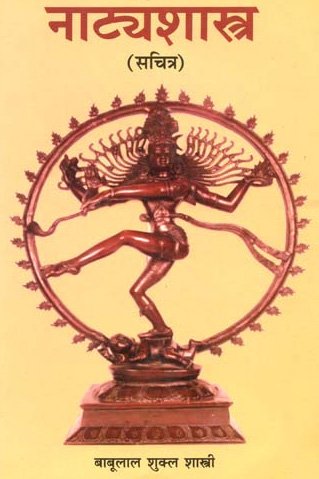Sucyasya, Sūcyāsya, Suci-asya: 9 definitions
Introduction:
Sucyasya means something in Hinduism, Sanskrit. If you want to know the exact meaning, history, etymology or English translation of this term then check out the descriptions on this page. Add your comment or reference to a book if you want to contribute to this summary article.
Alternative spellings of this word include Suchyasya.
In Hinduism
Natyashastra (theatrics and dramaturgy)
Source: Wisdom Library: Nāṭya-śāstra1) Sūcyāsya (सूच्यास्य) is another name for Sūcīmukha, a Sanskrit technical term referring to a gesture (āṅgika) made with a ‘single hand’ (asaṃyuta), according to the Nāṭyaśāstra chapter 8.
2) Sūcyāsya (सूच्यास्य) refers to a gesture (āṅgika) made with ‘dance hands’ (nṛttahasta), according to the Nāṭyaśāstra chapter 8. It is also known by the name Sūcīmukha. The hands (hasta) form a part of the human body which represents one of the six major limbs (aṅga) used in dramatic performance. With these limbs are made the various gestures (āṅgika), which form a part of the histrionic representation (abhinaya).
Source: archive.org: The mirror of gesture (abhinaya-darpana)One of the saṃyutta-hastāni (Twenty-six combined Hands).—Sūcyāsya (needle-face): Sūci hands are moved aside from the front simultaneously. Patron deity Nārada. Usage: saying “What am I to do?”, yearning for the beloved, saying “Everything”, or “Look here.”
Source: Shodhganga: Elements of Art and Architecture in the Trtiyakhanda of the Visnudharmottarapurana (natya)Sūcyāsya (सूच्यास्य) refers to one of the twenty-two Asaṃyuktahastas or “single hand gestures” (in Indian Dramas), according to the Viṣṇudharmottarapurāṇa, an ancient Sanskrit text which (being encyclopedic in nature) deals with a variety of cultural topics such as arts, architecture, music, grammar and astronomy.—The hasta-mudrās (lit. “hand-gestures”) are very essential to denote some particular action or state in dancing and these mudrās are formed with the help of hands and fingers.—The word sūcī means a tool which is used for stitching. It refers to the needdle. According to the Viṣṇudharmottarapurāṇa in sūcyāsya-hasta, the tarjanī finger is extended in khaṭakāmukha-hasta. When the tarjanī is extended in sūcī posture, it looks like pointing something with the forefinger. The Viṣṇudharmottarapurāṇa says that the natural phenomenon like day and night are denoted with this hand posture. It is also used to denote the eyes of Śakra and Maheśa. But in the Abhinayadarpaṇa, numbers like one and hundred are shown with this posture. Paramabrahma i.e., the Supreme Entity is also indicated with this hand posture. Moreover, this hand posture also indicates the sun and a city.

Natyashastra (नाट्यशास्त्र, nāṭyaśāstra) refers to both the ancient Indian tradition (shastra) of performing arts, (natya—theatrics, drama, dance, music), as well as the name of a Sanskrit work dealing with these subjects. It also teaches the rules for composing Dramatic plays (nataka), construction and performance of Theater, and Poetic works (kavya).
Languages of India and abroad
Sanskrit dictionary
Source: DDSA: The practical Sanskrit-English dictionarySūcyāsya (सूच्यास्य).—a rat.
Derivable forms: sūcyāsyaḥ (सूच्यास्यः), sūcyāsyaḥ (सूच्यास्यः).
Sūcyāsya is a Sanskrit compound consisting of the terms sūci and āsya (आस्य).
Source: Cologne Digital Sanskrit Dictionaries: Shabda-Sagara Sanskrit-English DictionarySūcyāsya (सूच्यास्य).—m.
(-syaḥ) A rat. E. sūcī a needle, and āsya face.
Source: Cologne Digital Sanskrit Dictionaries: Monier-Williams Sanskrit-English Dictionary1) Sūcyāsya (सूच्यास्य):—[=sūcy-āsya] [from sūcy > sūc] mfn. n°-mouthed, [cf. Lexicographers, esp. such as amarasiṃha, halāyudha, hemacandra, etc.]
2) [v.s. ...] m. a rat, [cf. Lexicographers, esp. such as amarasiṃha, halāyudha, hemacandra, etc.]
3) [v.s. ...] a gnat or musquito, [cf. Lexicographers, esp. such as amarasiṃha, halāyudha, hemacandra, etc.]
4) [v.s. ...] a [particular] position of the hands, [cf. Lexicographers, esp. such as amarasiṃha, halāyudha, hemacandra, etc.]
Source: Cologne Digital Sanskrit Dictionaries: Yates Sanskrit-English DictionarySūcyāsya (सूच्यास्य):—[sūcyā+sya] (syaḥ) 1. m. A rat.
[Sanskrit to German]
Sanskrit, also spelled संस्कृतम् (saṃskṛtam), is an ancient language of India commonly seen as the grandmother of the Indo-European language family (even English!). Closely allied with Prakrit and Pali, Sanskrit is more exhaustive in both grammar and terms and has the most extensive collection of literature in the world, greatly surpassing its sister-languages Greek and Latin.
Kannada-English dictionary
Source: Alar: Kannada-English corpusSūcyāsya (ಸೂಚ್ಯಾಸ್ಯ):—[noun] = ಸೂಚೀಮುಖ - [sucimukha -] 4.
Kannada is a Dravidian language (as opposed to the Indo-European language family) mainly spoken in the southwestern region of India.
See also (Relevant definitions)
Partial matches: Shucy, Asya, Shuci.
Starts with: Sucyasyahasta.
Full-text: Sucimukha, Sucyasyahasta, Asamyuta, Nrittahasta, Shun, One, Hundred, City, Supreme entity, Asamyuktahasta, Samyutta-hastani.
Relevant text
Search found 3 books and stories containing Sucyasya, Sūcyāsya, Suci-asya, Sūci-āsya, Sūcī-āsya, Sucy-asya, Sūcy-āsya; (plurals include: Sucyasyas, Sūcyāsyas, asyas, āsyas). You can also click to the full overview containing English textual excerpts. Below are direct links for the most relevant articles:
Abhinaya-darpana (English) (by Ananda Coomaraswamy)
Natyashastra (English) (by Bharata-muni)
Vishnudharmottara Purana (Art and Architecture) (by Bhagyashree Sarma)
2.2. Hand Postures (a): Asaṃyukta-hasta < [Chapter 3 - Drama and Dance]